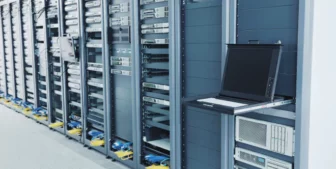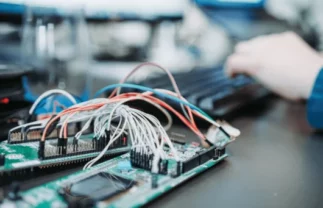
When to Build, Buy, or Use Open Source for IoT Platform Development
Summarize:
Don’t guess when it comes to IoT platform development. Compare custom, ready-made, and open-source solutions in our guide and make the best pick.
Most IoT projects fail before they scale. Choosing the wrong platform is often to blame. IoT platform development comes with a tough early decision: should you build your own, buy a ready-made solution, or go with an open-source one?
It’s easy to get confused here. Vendors guarantee quick results, open-source tools look tempting, and building your own seems powerful but risky. Making the wrong choice? You could face time-to-market delays, long-term ownership costs, and scalability issues. In fact, 80% of IoT projects never really scale as they can’t support growing systems.
On the flip side, we’ve seen what the right choice can bring. We helped RAKwireless develop their own, custom platform for managing IoT networks. This meant their customers could easily set up and manage large IoT networks automatically. The platform has since received hundreds of positive reviews on LinkedIn.
So — build, buy, or open source? Let’s figure this out.
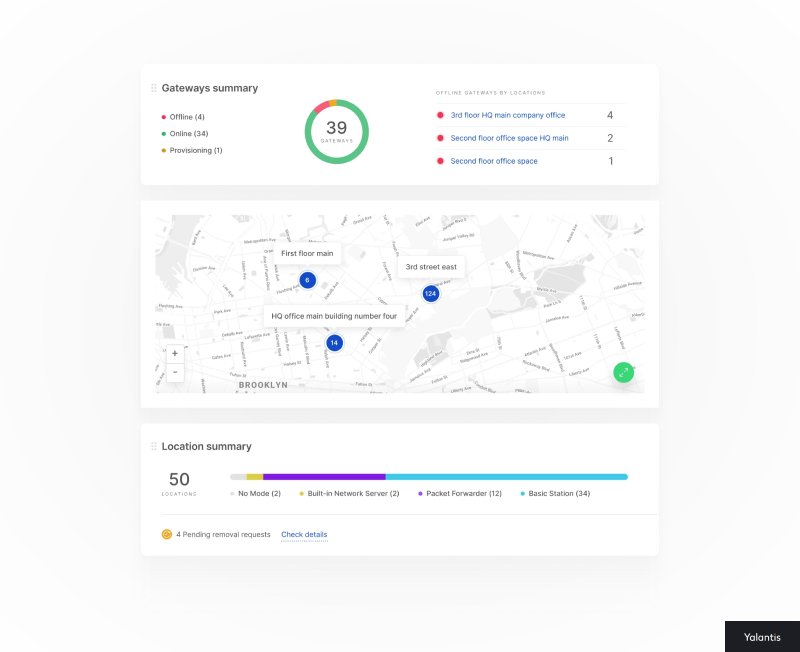
Highlights:
- Building, buying, or going open source each has a different purpose. What’s suitable for one company may hold another back.
- Custom platforms offer full control over integration, security, and long-term growth.
- Commercial platforms help you launch faster but limit flexibility later.
- Open-source platforms might give you some freedom — but only if you have the right technical expertise.
What Is an IoT Platform and Why Choosing the Right One Matters
Before you decide whether to build, buy, or go open-source, let’s get clear on what we’re actually talking about. An IoT platform is the foundation of any connected product. It’s an ecosystem that helps your hardware (sensors and devices) connect and communicate with your software (user-facing apps, analytics tools, and more).
Key IoT Platform Components
An IoT platform normally consists of the following components:
- Device management. This involves keeping track of devices, along with updates, provisioning, and troubleshooting.
- Device connectivity and network management. This ensures communication between devices and the platform through Wi-Fi, Bluetooth, MQTT clients, or other protocols.
- Data collection and processing. This includes gathering, cleaning, processing, and analyzing data from connected devices.
- Cloud infrastructure. This provides the computing power, storage, and networking capabilities to handle all gathered data.
- Security. This protects devices, networks, data, and, ultimately, your users from cyber threats — both internal and external.
- Application enablement. This gives you APIs, SDKs, and other development tools for building user-facing IoT applications and dashboards.
To better grasp how it all works, look at the typical IoT platform architecture diagram below:
Build vs. Buy vs. Open Source: Strategic Trade-Offs
Moving to the big question: when should you consider building, buying, or going open source? Each path has trade-offs in speed, flexibility, cost, and the level of control. Let’s figure out when each makes the most sense:
When to Build a Custom IoT Platform
Building your own IoT platform makes total sense when you:
- need full flexibility and deep integration with your existing architecture
- have unique industry requirements that off-the-shelf solutions don’t cover
- deal with strict security, data ownership, and compliance requirements
Of course, it’s not the cheapest option upfront. Yet, for many businesses, especially those with a large device fleet, it pays off with better long-term ROI — through lower dependency on vendors and customized workflows.
Just consider a custom IoT fleet management solution we’ve built for a logistics company in the US. Our client was struggling with rising costs and outdated paper-heavy workflows. We decided to tackle that by:
- integrating IoT devices directly into their fleet operations
- building multi-interface dashboards for fleet managers, drivers, customers, and other stakeholders
- automating paper- and call-based processes
- adding predictive maintenance features
As a result, we delivered an IoT platform that fully matched our client’s processes and enabled 1.5X faster order delivery, up to 40% reduction in operating costs, and 50% greater operational efficiency. That level of impact? Only possible with a custom solution.
When to Buy a Commercial IoT Platform
Ready-made, commercial IoT solutions would be a great pick when:
- fast time-to-market, constant vendor support, and pre-built integrations are your primary focus
- you’re launching an MVP, testing new services, or IoT isn’t the core of your business model
But there’s a catch: vendor lock-in. Commercial platforms indeed save you time at first, but subscription and scaling costs can add up over time. Plus, you may be limited by the vendor’s roadmap or platform constraints over time.
When to Use Open Source IoT Platforms
Open source IoT platforms are great for teams who value freedom, flexibility, and community-driven innovation. The best part? They’re free to use, meaning no upfront costs.
That said, open source isn’t a shortcut. It requires skilled engineers, may have fragmented support, and often comes with an uncertain roadmap. In this approach, your team is responsible for keeping the platform up-to-date, secure, and scalable.
Open-source platforms give you significant flexibility. Want to build a smart farming system? Monitor air quality in real time? Set up connected offices or healthcare IoT solutions? It’s all possible. You can build almost anything. But that freedom only works if you’ve got a strong tech team behind you.
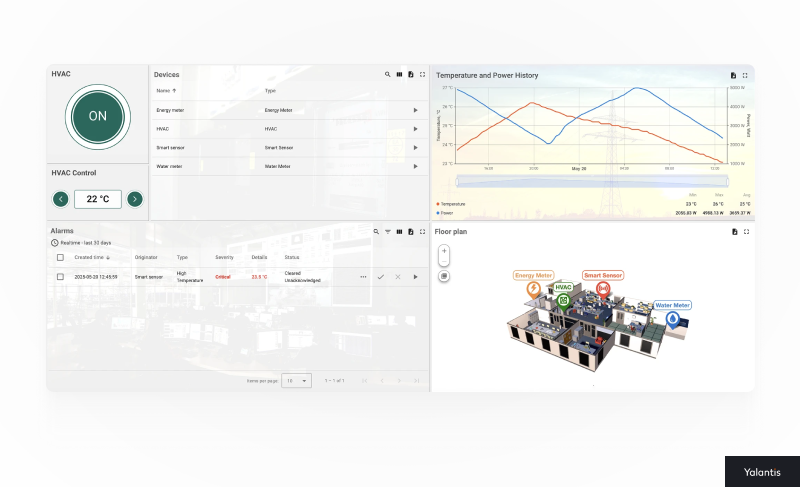
How to Decide Between Building, Buying, or Using Open Source
By now, you know which IoT platform is suitable for what. But how do you determine if it’s the right pick for your IoT platform development? Base your decisions on the following:
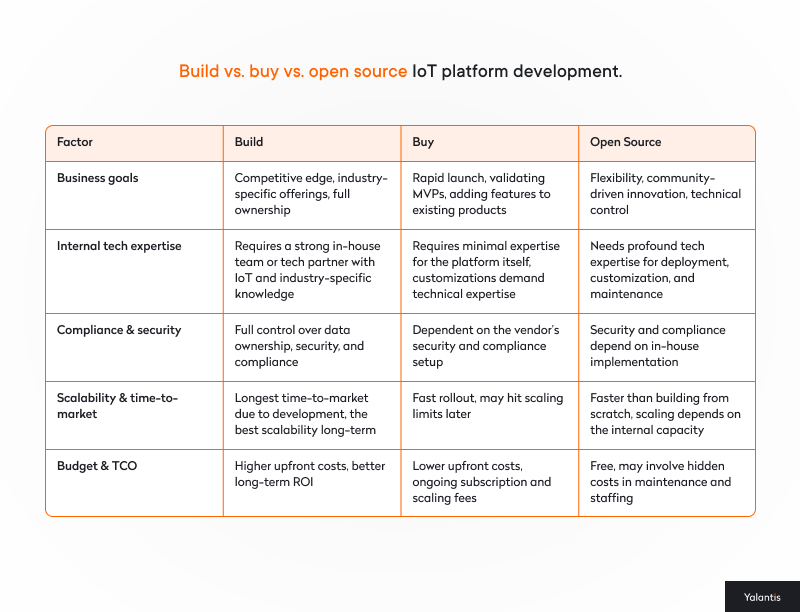
Here’s a quick rule of thumb:
- build if your IoT platform is the business
- buy if IoT supports your business
- open source if your team lives development — and loves a challenge
But it’s not always either-or. You can combine commercial platforms with open-source or custom modules to get the best of all worlds. Or you may try to mix other options if that’s relevant for your business.
Still unsure about your IoT platform strategy?
Yalantis Approach to IoT Platform Development
Chose a suitable IoT platform? Great. Now, you have to turn that choice into a working, scalable solution. And that’s precisely where Yalantis helps. Our IoT technology services include:
- Modular, scalable architecture design. Our architectures are future-proof owing to their modular design. We either use edge, cloud computing, or both — so you can process data where it makes the most sense.
- Security and compliance-first development. We’re ISO-certified and follow all the security and compliance best practices, including GDPR. That means data encryption, secure device updates, and custom workflows for industries with specific regulations — like in software development for medical devices.
- Integration with legacy systems and APIs. We can connect your IoT platform with existing APIs, external systems, and even legacy software.
- Support across the full development lifecycle. We offer end-to-end development. That means we’ve got your back — from MVP to market leader. And as an embedded system development company, we help with hardware and firmware as well.
Tangible Results: Smarter Buildings, Faster Rollouts
Take, for example, our project with a Germany-based smart building company. They build eco-friendly residential and office spaces across Europe, complete with IoT sensors and automation.
The challenge? Every time our client completed a new building, they had to integrate with the different software stacks their customers used for device data management and analytics. Every time!
Our solution? We offered our IoT Accelerator, a modular PoC platform we customized to their business model. By extending it with custom modules, we made it compatible with all the IoT hardware they were already using.
As a result, we enabled 30% faster software implementation across new construction projects.
“With IoT, flexibility is essential — but control is everything. We give our clients both: the freedom to innovate, and the infrastructure to support it as they grow.”
What’s at Stake If You Pick the Wrong IoT Solution?
We’ve been constantly emphasizing that your platform choice is important. But what are the real consequences of a wrong pick? Here’s what’s at stake:
- Vendor lock-in. A fast setup and lots of features may be especially tempting when choosing a commercial, managed platform. But what will happen when you want to seamlessly integrate with new systems or move your IoT data elsewhere? Unfortunately, you may find yourself dependent on someone else’s roadmap, pricing, and priorities.
- Security vulnerabilities. According to IBM’s 2024 Cost of a Data Breach Report, the average cost of a data breach is now $4.9 million per incident. If the IoT system you choose isn’t built with security in mind, you’re open to such breaches, along with compliance fines and reputational damage.
- Slow feature releases. If you rely on a third-party vendor with a slow roadmap, you’re handing your competitive edge to someone who controls their tech stack. The risk? While you’re waiting for updates, your competitors offer features your product should already have.
- Scalability limitations. What works for 100 devices might not when you hit 1,000 or 10,000. If your architecture cannot handle new users and devices without constant rework, you’ve basically built a bottleneck into your own growth.
The good news? You can avoid all of this by planning upfront. Opting for IoT device consulting services lets you make sure your platform has flexibility, security, and scalability built in from the very beginning.
“Don’t choose an IoT platform for today’s features. Consider what it can offer you tomorrow.”
Conclusion
Your IoT platform is the core of your IoT strategy. Why? Because when you get it right, everything else becomes easier — scalability, security, flexibility, long-term cost control, the list goes on.
So, what to choose?
- build when you need full control or create something that doesn’t fit off-the-shelf
- buy when speed is your top priority or you need simple MVPs and add-ons to your core product
- go open source if you want more control without starting from scratch
We’ve helped clients in healthcare, logistics, energy, and industrial data analytics design and build reliable, secure platforms that scale. Let’s talk about what yours could look like.
FAQ
What costs to expect in commercial IoT platform development?
Commercial IoT solutions typically require monthly/annual subscription fees, costs for additional features or modules, and possible fees for scaling. Besides that, you may need to pay for integrating the platform with your existing systems.
When is building a custom IoT platform more beneficial?
Building your own IoT platform is best when you either have unique, industry-specific requirements (like in industrial IoT or healthcare), strict security and compliance needs, or need full integration with your current workflows and systems. This way, you can tailor the platform to your business completely.
What features to look for in an IoT app development platform?
Consider device management, connectivity, real-time device data processing and collection, security mechanisms, and IoT applications for end-users. Cloud infrastructure is a great feature to include as well.
What risks come with open-source IoT platforms?
When choosing an open-source IoT platform, you may have to deal with inconsistent support, security vulnerabilities if updates aren’t managed, and unclear development roadmaps. It’s not that open source is bad. It’s that your team has to be fully responsible for platform maintenance.
Rate this article
4.9/5.0
based on 15 reviews

